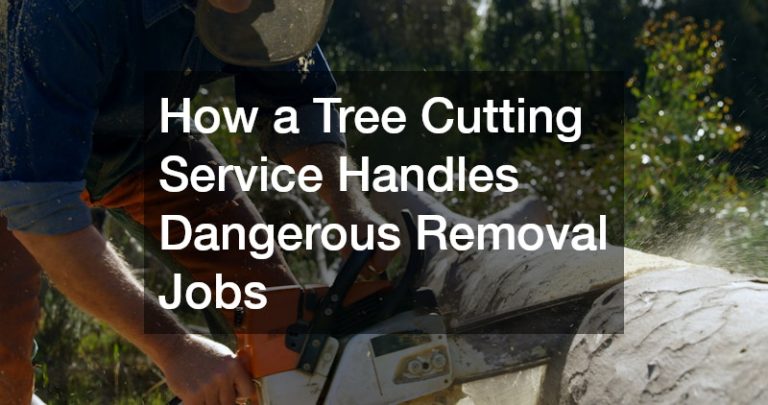This article explores the intricacies of how tree cutting services manage dangerous removal jobs, highlighting safety protocols, equipment use, and expert techniques employed to ensure the job is completed efficiently and safely.
What Safety Measures Do Tree Cutting Services Take During Dangerous Removals?
Safety is paramount in any tree removal job, but even more so when dealing with hazardous trees. Professional tree cutting services implement a range of safety measures designed to protect not only their crew but also nearby structures, vehicles, and individuals.
This begins with the use of personal protective equipment (PPE) such as helmets, goggles, gloves, and chainsaw chaps, which are essential in reducing the risk of injuries that can occur during tree cutting operations.
Beyond just PPE, crews often set up safety barriers or caution tape to keep bystanders at a safe distance while the job is underway. This is crucial, as falling branches or even the tree itself can pose serious risks to unwitting passersby. A designated safety officer is typically assigned to monitor the worksite and ensure that protocols are being adhered to, serving as a vigilant guardian throughout the removal process.
How Do Professionals Assess the Risk of Tree Removal?
Assessing the risk associated with tree removal is a critical first step that professionals undertake to determine the safest and most effective approach to take. This risk assessment process involves examining the tree’s health and structural integrity, as well as identifying any visible signs of damage such as cracks or rot that may affect its stability. Experienced arborists utilize their knowledge to evaluate the potential hazards that a particular tree represents.
The location of the tree plays a significant role in the risk assessment. Trees that are positioned near power lines, homes, or other valuable structures require careful consideration and a more thorough evaluation. The competency of the tree cutting service team ensures that all relevant factors, such as wind direction and ground conditions, are assessed, forming a comprehensive picture of the potential risks before work begins.
What Equipment Is Used for Dangerous Tree Removals?
The removal of dangerous trees often requires specialized equipment that ensures both safety and efficiency. Chainsaws are the primary tool used in tree cutting services, with varied sizes and types to accommodate different tree species and removal techniques. From small, lightweight models for pruning to robust chainsaws designed for felling large trees, the choice of equipment is crucial for effective operation.
In addition to chainsaws, tree cutting services deploy a range of other tools and machinery. Climbing gear, such as harnesses and ropes, allows workers to ascend trees safely for limbs or branches that need to be removed first. Bucket trucks or cranes may also be utilized for very tall trees, providing the necessary height and stability for precision cutting and to minimize the risk of falling debris.
Support equipment, such as chippers and stump grinders, are employed after the tree has been cut down. This ensures that not only is the tree removed, but also that subsequent cleanup is handled professionally and efficiently. The safety features in this specialized equipment significantly contribute to the overall effectiveness of dangerous tree removal, underscoring the importance of using the right tools for the job.
What Are the Steps Involved in a Dangerous Tree Removal Job?
The process of dangerous tree removal is methodical and requires careful planning before execution. Initially, the team will conduct a risk assessment and develop a strategic removal plan, detailing how the tree will be taken down safely. This includes identifying the safest direction for the tree to fall and any immediate hazards that need to be mitigated during the job.
Once the plan is in place, the team prepares the site by clearing a safe landing zone and establishing a perimeter to keep bystanders at a distance. Workers don their PPE and perform a final briefing to ensure everyone is aware of their role. During the execution phase, the team cuts the tree in stages, beginning with the removal of branches before felling the main trunk. Controlled techniques are employed to guide the tree’s fall as planned.
After the tree has been removed, the final steps involve cleanup and disposal of debris. The site is carefully inspected to ensure that no hazards remain, and any remaining stump is addressed either through grinding or removal. By following these detailed steps, tree cutting services ensure that dangerous removals are executed both safely and efficiently, providing peace of mind to property owners.
Understanding how tree cutting services handle dangerous removal jobs not only highlights the importance of safety and professionalism but also reassures property owners of the value of hiring skilled experts for such challenging tasks. With a commitment to safety, effective risk assessment, proper equipment use, and a clear operational process, tree cutting services navigate the complexity of hazardous tree removal expertly. This expertise not only protects their crews but also safeguards the properties in and around the job site, ensuring a job well done.
